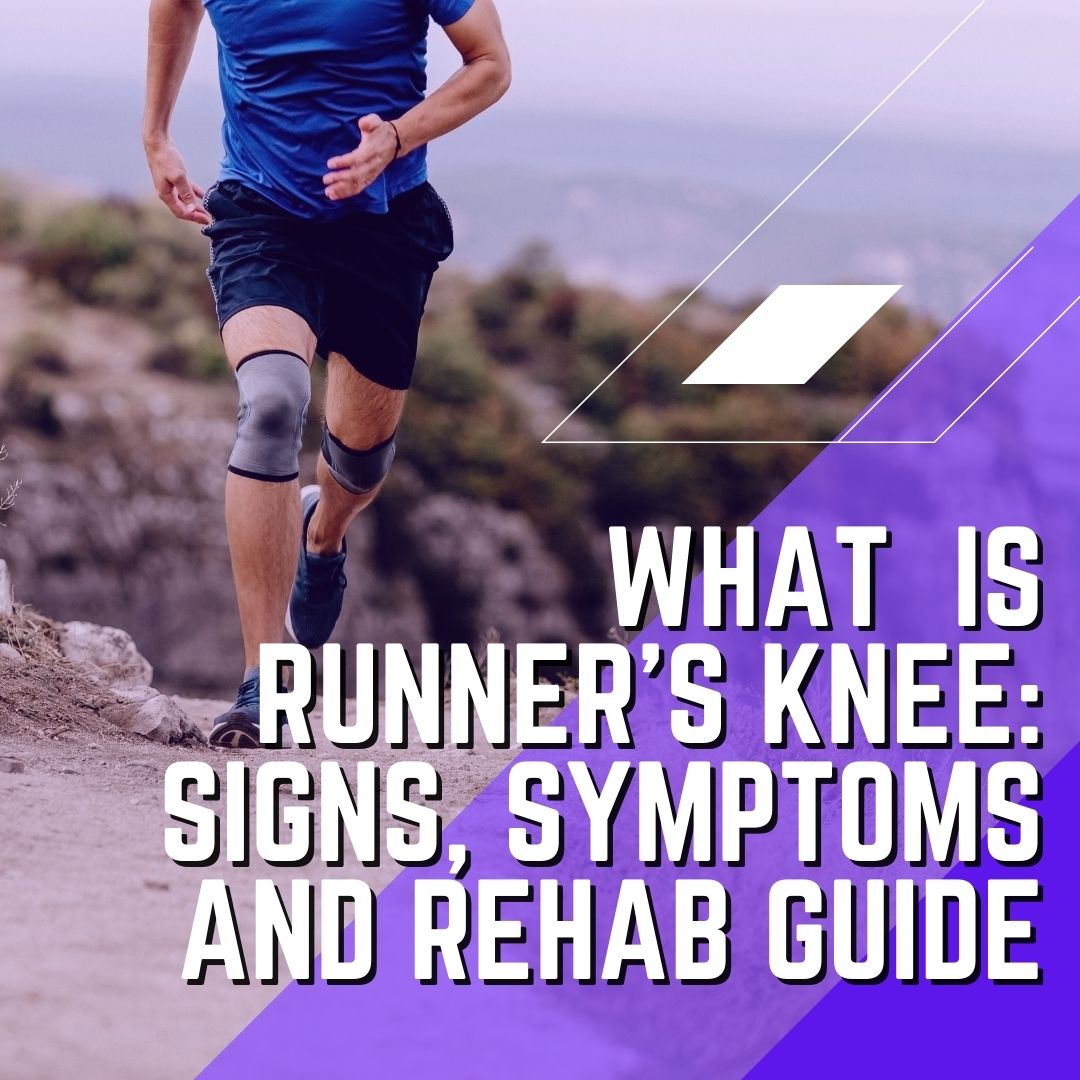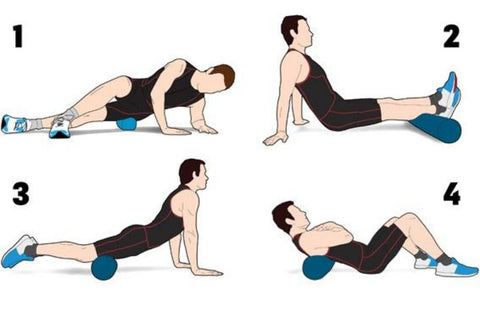
What Is Runner's Knee: Signs, Symptoms and Rehab Guide
Share

Runner's knee has been a problem for many athletes and runners. In this article, we will talk about what a runner's knee is, how to identify if you have it, what the symptoms are, and how to get relief from your pain.
Hot/cold compression wraps can help relieve some of the pain that comes with the runner's knee by applying cold therapy or heat therapy when needed to stabilize your temperature and reduce inflammation in the area.
Runner's Knee - What Is It?
People that are involved in intense physical activities, such as running for sports or gym workouts, often experience knee pain. This is known as the runner's knee and can be very painful to the sufferer.
Runner's knee is an inflammation in the iliotibial band, which runs down the outside of the thigh. This causes pain when running or exercising, and can be very painful when walking upstairs or getting into a car if standing for too long. Symptoms may vary slightly from person to person but could include:
- Pain on either side of your knee especially while climbing stairs
- Inability to bend your knee as far as normal
- Around the outside of the knee, there is swelling.
However, those running should be wary of the condition, as it can be very dangerous if not treated.
What are some common signs of a runner's knee?

There are several different reasons as to why someone would suffer from a runner's knee. Some possible causes include poor training techniques such as overtraining, incorrect shoes worn during exercise (elevated heel), muscle imbalances due to over-training, worn-out shoes, or the feet turning outwards during running.
Some general signs that could indicate an individual is suffering from a runner's knee include:
- Tenderness on the side of your knee
- Pain while walking upstairs or getting into a car after standing for some time
- Weakness in the quadriceps or hamstring muscles.
The symptoms associated with a runner's knee
There commonly associated symptoms with a runner's knee, which include:
- Pain that worsens when running downhill or upstairs/hills;
- Swelling around the joint making it difficult for you to bend your leg properly;
- Clicking sounds coming from your knee cap as well as tenderness when touching where pain occurs. -
- Pain on the outside of the knee while running or walking. This pain is often described as a sharp or burning sensation around the knee.
- The area may also be tender to touch, and in some cases, there may be a bony lump on the outside of the knee.
- In extreme cases, you could experience swelling from your kneecap and it may become difficult to walk.
- There are many different causes of a runner's knee, so the associated symptoms will vary depending on what is causing it, such as muscle spasms or nerve irritation.
However, some more specific symptoms can be associated with having this condition including pain when you go upstairs or getting into a car after standing for some time. This may also occur during strenuous activities such as climbing, squatting, and crouching. Although those that are over 40 years old may experience pain in the knee without exercising or straining themselves at all.
How to treat a runner's knee?
If you are feeling any pain in your legs, particularly around the knees you must take some time out from exercising until this has cleared up. It may be possible for you to recover from runner's knee by making lifestyle changes such as:
- Ensuring that footwear provides support for your feet
- Limiting strenuous activity sessions and increasing workout regime gradually (for at least two weeks)
- Wearing compression socks which will limit blood flow out of the muscles while working out, providing pressure on areas where there may be swelling due to inflammation. These can help reduce pain and discomfort throughout exercise sessions. Compression socks can also be worn during and after an exercise session.
- Applying ice wrapped in a cloth or towel for 15 minutes at a time to ease any pain or swelling around your knee area
- Taking an anti-inflammatory medication such as ibuprofen or paracetamol if you are feeling particularly sore. If symptoms appear severe, consult with your doctor immediately before making lifestyle changes when it comes to treating the runner's knee.
What can I do to prevent further injury?

The best way you could prevent yourself from getting a runner's knee again is to make some lifestyle changes. This includes:
- Making sure you are aware of the symptoms and signs that indicate an injury occurring
- Avoiding doing too much strenuous activity in one go, or increasing your workout regime by more than 15% each week
- Ensure that you wear appropriate footwear when exercising if possible - this should provide support for the arches in your feet along with shock absorption capabilities
- You can also receive treatment by wearing compression socks which will limit blood flow out of the muscles while working out, providing pressure on areas where there may be swelling due to inflammation. These will help reduce pain discomfort throughout exercise sessions. Compression socks can be worn during and after an exercise session
Prevention tips for runners with or without the condition

- If you do not have a runner's knee but are at risk of developing the condition it is important to consider your training regime. You should avoid doing too much strenuous activity in one go or increasing your workout regime by more than 15% each week.
- If you already have a runner's knee it is even more crucial to ensure that you are aware of the symptoms and signs which show an injury has occurred so that treatment can be sought immediately at the first sign of pain developing.
You should avoid any strenuous activity until pain subsides completely, but remember not to overdo it while continuing rehabilitation exercises regularly throughout the recovery period.
Rehab guide for runners with runner’s knee.

Runner’s knee is a term used to describe the pain felt on or around the kneecap. It can be an incredibly painful injury, especially during exercise and while engaging in physical activity. Runners are at higher risk of developing this type of injury, though it can also affect cyclists, skiers, and weightlifters who engage in repetitive movement with their lower body joints.
Rehabilitation exercises can include:
- leg extensions
- hamstring curls and seated or standing calf raises to strengthen muscles around the knee
- hip-strengthening exercises for those who experience pain during squats
- balance training to improve proprioception (the body's awareness of where it is in space)
- using ice therapy immediately after an exercise session followed by heat treatment which will help reduce swelling
Rehabilitation may take anywhere from a few weeks up to six months depending on how severe runner’s knee symptoms are.
If you do not have access to weights at-home fitness equipment like resistance bands, ankle cuffs, and hand grips can be used as substitutions when doing rehabilitation exercises. However, if any pain persists your physician so can provide you with rehabilitation exercises that are specific to your needs.
Runner’s knee is a common injury among runners, cyclists, and other athletes who engage in repetitive activities involving their legs; rehabilitation techniques can be used to reduce pain and promote overall wellness for those suffering from this condition!
This article has covered how to identify if you have a runner’s knee, the symptoms of it, and what relief options are available. Remember that your first step should be to talk with a doctor or therapist about whether there is an underlying issue causing this pain before trying any self-treatment methods like cold/heat compression wraps.

